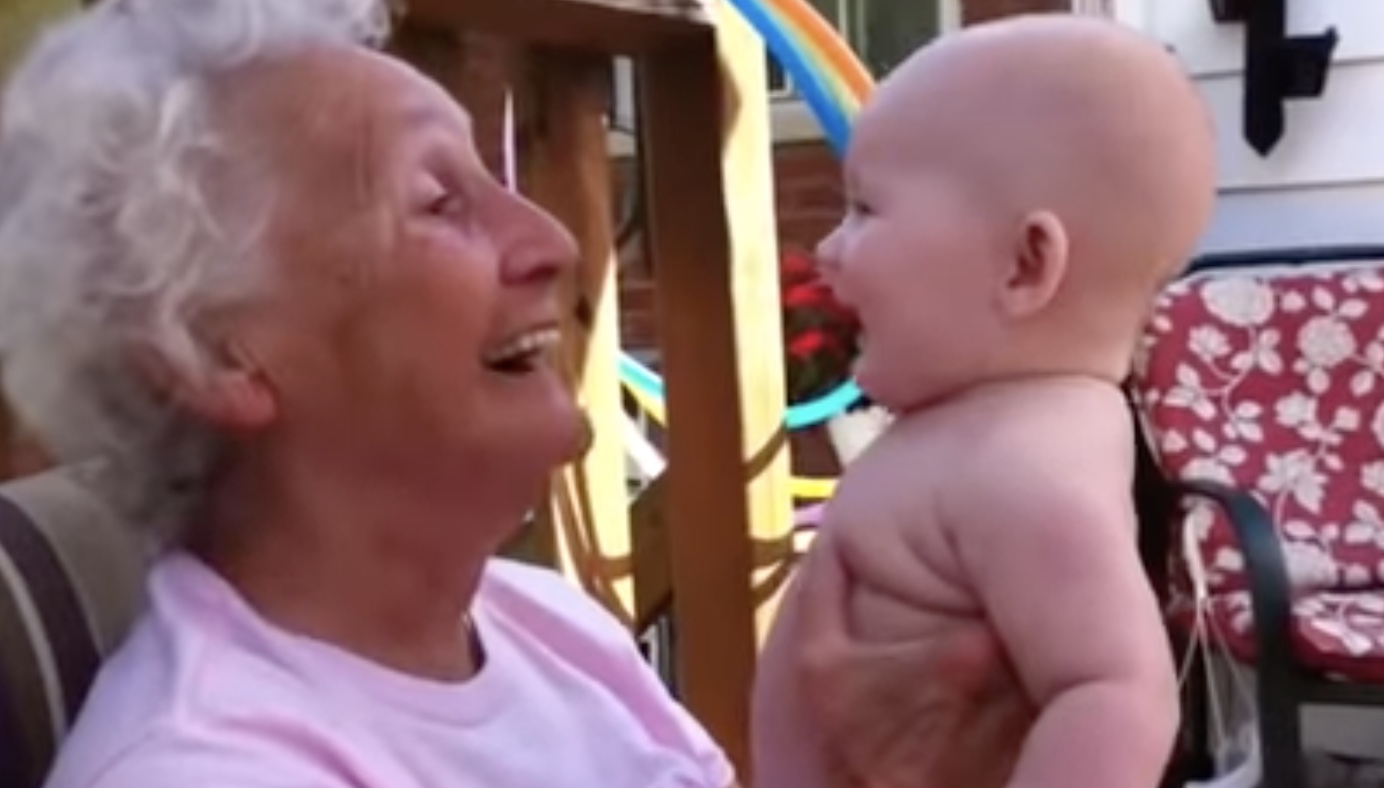The enchanting sound of a baby attempting to converse is one of the purest forms of joy one can experience. The scene becomes even more heartwarming when the interaction is between a baby and her great-grandmother. Often, the babbles and coos of infants may seem like mere noise to us, yet we tend to listen without responding. However, imagine a scenario where a baby’s vocal explorations receive heartfelt engagement in return.
In this particular vignette, a baby girl is cradled by her great-grandmother, creating a tender tableau of intergenerational connection. As the infant experiments with a variety of adorable sounds, her great-grandmother gazes into her eyes, responding with gentle coos and mimicked noises. This exchange elicits laughter and excitement from the baby, prompting her to produce even more spirited sounds.
The duo’s delightful banter spans several minutes, igniting curiosity about the baby’s attempts at communication. Regardless of the content, the great-grandmother remains an attentive audience, fostering a nurturing environment for the baby’s vocal experiments.

This interaction isn’t merely a charming family moment; it plays a critical role in the infant’s developmental journey. Engaging in verbal exchange with babies is crucial for their language and communication growth. Regular dialogue exposes them to diverse sounds and vocabularies, enhancing their language comprehension and expressive abilities. Such interactions are essential for expanding the range and depth of words they grasp and articulate.
Moreover, this shared experience extends beyond language development. Interacting with an elder, like the great-grandmother in this story, is deemed beneficial for infants. According to insights from Masako Myowa, an associate professor at Kyoto University, human children thrive in environments where they receive care and attention from various adult figures, including grandparents. This inclusive upbringing approach contributes significantly to a child’s holistic growth.
The positive repercussions of these intergenerational exchanges also extend to the elderly. In the UK, certain nursing homes have adopted programs that facilitate interactions between the elderly and young children. These initiatives have yielded observable benefits, enhancing seniors’ mental and physical well-being. Participants show signs of reduced depression, improved mobility, and cognitive function, and experience a decrease in dementia symptoms.

Therefore, fostering connections between young children and their elder relatives can be mutually advantageous. Not only does it aid in the child’s linguistic and emotional development, but it also invigorates the elderly, enriching their quality of life. Furthermore, such interactions offer parents and caregivers a sense of fulfillment, witnessing the joy and learning unfolding between their children and older family members.
In essence, the reciprocal exchange of affection and learning between a baby and her great-grandmother illustrates the profound impact of intergenerational bonds, underscoring the importance of nurturing these relationships for the betterment of family and community alike.



